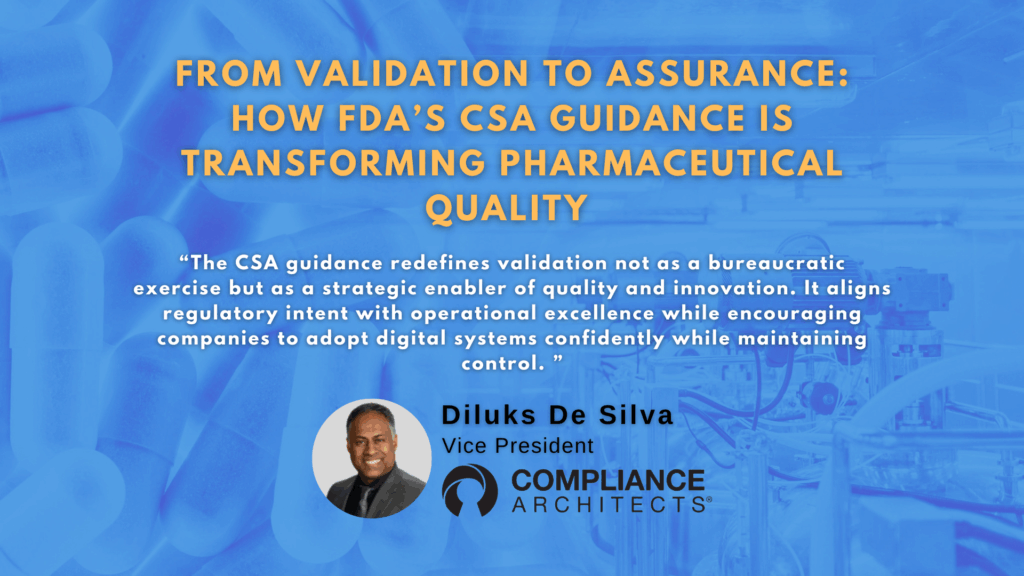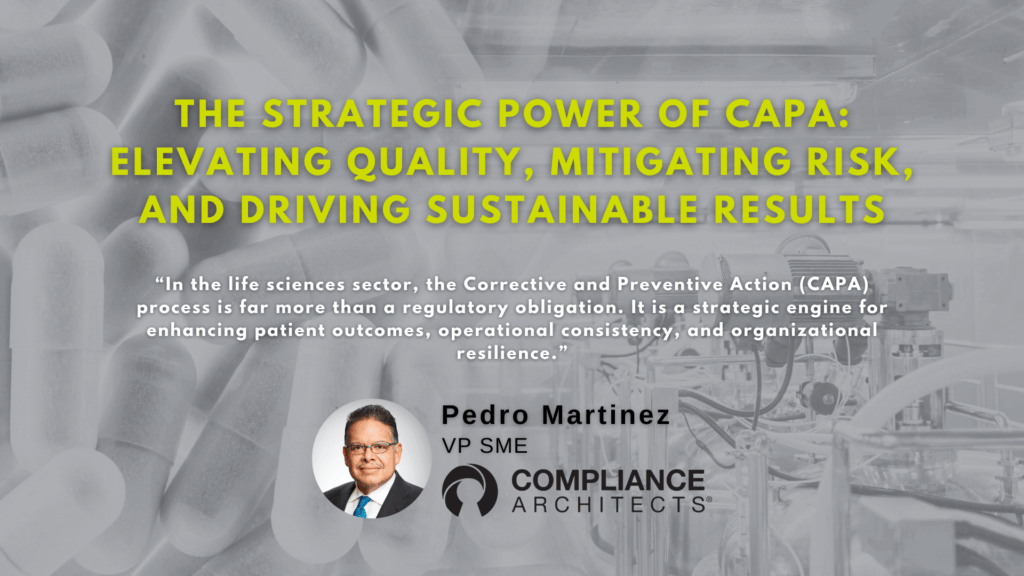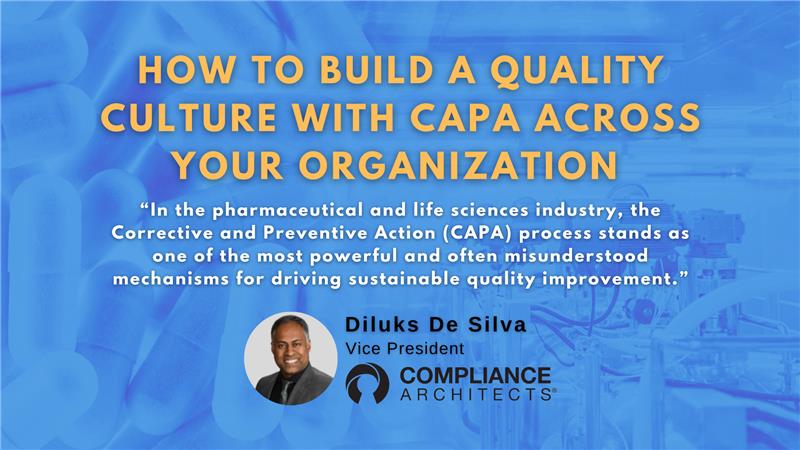As the MedTech industry embraces Artificial Intelligence (AI)- driven diagnostics, robotic-assisted procedures, patient-centric healthcare solutions, and smart implants, the promise of meeting unmet patient needs and enhancing clinical outcomes grows exponentially. The industry has positioned itself as the advocate for patients, promoting an improved quality of life.
Yet, with innovation comes complexity—and the challenge of maintaining reasonable compliance becomes more relevant. Quality Risk Management (QRM), mainly under ISO 14971:2019 – Application of Risk Management to Medical Devices and the FDA Quality Management System Regulation (QMSR) incorporating ISO 13485:2016 – Quality Management Systems frameworks, must evolve to address these emerging stakes while preserving the integrity of patient safety and product performance, directly elevating access to better healthcare. Prioritize the most critical elements first.
Table of Contents
Five key areas must be the focus of the industry in the quest to manage risk effectively:
- Embed Risk Thinking Early in Design
- Strengthen Data Integrity Across the Lifecycle
- Align Risk Controls with Evolving Regulatory Expectations
- Leverage Post-Market Surveillance for Continuous Risk Evaluation
- Foster a Robust and Agile Quality Culture Beyond Compliance
Embed Risk Thinking Early in Design

Challenge: AI/Software-enabled devices often evolve iteratively, making it difficult to anticipate risks during early development stages.
Solution: Apply a proactive risk mindset from the concept phase. Develop comprehensive user/intended needs, ensuring adequate breakdown of the population segments likely to use the product. Use preliminary hazard analysis (PHA) and integrate risk-benefit evaluations into design controls.
Collaborate with cross-functional teams—including data scientists and health care professionals —to identify potential failure modes and unintended consequences of algorithmic behavior. Begin design transfer development early to ensure a safe, effective supply chain. The transfer activities must cover Equipment Design, Process Development, Facilities,s and Utilities.
Strengthen Data Integrity Across the Lifecycle
Challenge: AI and software systems rely on substantial datasets. Poor data quality or bias can introduce systemic risks.
Solution: Implement robust data governance protocols. Validate datasets for completeness, accuracy, and representativeness. Document data sources and ensure traceability from input to output. Consider using risk-based sampling and statistical techniques to monitor data drift as part of post-market surveillance activities.
Pay close attention to the definition of metrics. Is the data definition and collection fully harmonized? This is an ongoing challenge in the MedTech industry. Leverage your business excellence tools in this endeavor.
Align Risk Controls with Evolving Regulatory Expectations
Challenge: Regulatory bodies, such as the US FDA, Global Health Authorities, and EU MDR Notifying Bodies, are rapidly updating guidance on software as a medical device (SaMD) and Artificial Intelligence/Machine Learning-enabled technologies.
Solution: Stay ahead by integrating regulatory intelligence into your QRM process. Map risk controls to evolving standards such as the FDA’s QMSR and International Medical Device Regulators Forum (IMDRF’s) AI principles. Use living risk management files that adapt to new regulatory interpretations and ensure traceability between risk controls and applicable requirements. Software used in health innovation initiatives must be validated and included in a Device History File.
Leverage Post-Market Surveillance for Continuous Risk Evaluation
Challenge: AI-enabled devices may behave differently in real-world settings compared to controlled trials.
Solution: Establish feedback loops from post-market data into your QRM system. Use real-world evidence (RWE), adverse event reports, and user feedback to reassess risk acceptability.
Apply machine learning techniques to detect emerging patterns and dynamically update risk files. Conduct appropriate testing of the proposed design to ensure its effectiveness.
Foster a Robust and Agile Quality Culture Beyond Compliance
Challenge: Teams may view risk management as a checkbox activity, especially under tight development timelines.
Solution: Everyone in the organization must be aware of risk. Cultivate a culture where risk ownership is shared and distributed. Use visual risk summaries and dashboards to make risk profiles accessible across departments. Must adhere to ISO 14971:2019 Risk Management for Medical Devices.
The US FDA, EU Competent Authority, Australia Therapeutic Goods Authority (TGA), Japan Ministry of Health, Labor, and Welfare (MHLW), UK Medicines & Healthcare products Regulatory Agency (MHRA), and Health Canada require a Risk Management process to be defined and adequately documented. Encourage open dialogue about risk tolerance and mitigation strategies. Recognize and reward proactive risk identification and resolution.
Key standards that must be integrated into the risk management process are:
IEC 60601 Electrical Safety of Medical Devices
IEC 60601-1 is the foundational international standard for the safety and essential performance of medical electrical equipment.
Purpose: Ensures devices are electrically safe and perform reliably under normal and fault conditions.
Scope: Electrical, mechanical, thermal, and radiation safety
- Risk management integration (aligned with ISO 14971)
- Usability and alarm systems (via collateral standards like IEC 60601-1-6 and -1-8)
- IEC 62366-Usability Engineering for Medical Devices
- IEC 62366-1 focuses on applying usability engineering to medical devices to minimize use-related risks.
Purpose: Ensures that the user interface (UI) of a device supports safe and effective use.
Key Concepts:
- Identification of use-related hazards
- Risk mitigation through UI design
- Validation via formative and summative evaluations
ISO 10993-Biocompatibility of Medical Devices
Purpose: Assesses how device materials interact with the human body to ensure safety.
Key Parts:
- Part 1: Risk-based framework for biological evaluation
- Part 5: Cytotoxicity testing
- Part 10: Sensitization
- Part 11: Systemic toxicity
- Part 18: Chemical characterization
- ISO 13485:2016 Quality Management Systems
All these standards refer to Risk Management.
Final Thought
In a landscape where innovation is accelerating and regulatory scrutiny is intensifying, MedTech companies must treat Quality Risk Management not as a static obligation but as a dynamic enabler of safe, effective, and transformative healthcare solutions. By embedding these five strategies, organizations can navigate complexity with confidence and deliver technologies that truly elevate the quality of life.





